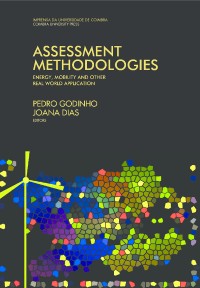Please use this identifier to cite or link to this item:
https://hdl.handle.net/10316.2/38152| Title: | Microsimulation for traffic calming schemes assessment: a case study | Authors: | Dourado, Joana F. Silva, Ana M. C. Bastos |
Keywords: | Microsimulation;Traffic Calming;30 km/h Zone;Home Zones | Issue Date: | 2015 | Publisher: | Imprensa da Universidade de Coimbra | Journal: | http://hdl.handle.net/10316.2/38126 | Abstract: | The accidents’ data in Portugal show an urgent need to improve the safety of vulnerable users in urban areas. In 2013 73% of the total pedestrians fatalities registered in urban areas occurred in local roads (ANSR, 2014). Many urban roads are multifunctional, used by vulnerable users and motorized traffic, which results in substantial differences in speed and degree of protection, producing a drastic asymmetry between the mobility of motor vehicles and the safety of vulnerable users. Traffic calming appears as a useful tool to mitigate this problem. In Portugal, recent legislation allows the implementation of urban traffic calming schemes particularly adapted for residential areas: 30 km/h zones and shared spaces (woonerf zones or home zones). With this in regard the existence of a minimum standardized methodology for the implementation of these schemes is essential to ensure an adequate selection of the urban area and a proper choice of the physical measures and road environmental changes to implement. “Before and after” studies are essential evaluation approaches of the transformed urban areas. Nevertheless, before the implementation of these schemes it would be helpful to have an idea on the impact of these measures without having to disturb the real system. Using microsimulation models it is possible to represent the reality with high detail, simulating the real network conditions and developing a perform analysis with computer representations.The feasibility and applicability of these concepts were tested in the development of a real case study, where changes were proposed to some areas of the neighbourhood Norton de Matos in Coimbra and a microsimulation model was built to evaluate the local and peripheral effects of such traffic calming schemes. A methodology for implementing such interventions in residential areas is presented. For that purpose a resident/ visitor survey was also elaborated. The results were particularly interesting. Population showed to be aware of the speed impacts and open to the implementation of such measures, defending the speed control and the safeguard of the pedestrians in residential areas. In a general analysis the evaluation of the results showed that the application of traffic calming measures would not generate a significant increase of the inter-zonal travel times, achieving however significant reductions in through traffic volumes and speeds within the study case area. | URI: | https://hdl.handle.net/10316.2/38152 | ISBN: | 978-989-26-1038-2 978-989-26-1039-9 (PDF) |
DOI: | 10.14195/978-989-26-1039-9_6 | Rights: | open access |
| Appears in Collections: | Assessment methodologies: energy, mobility and other real world application |
Files in This Item:
| File | Description | Size | Format | |
|---|---|---|---|---|
| microsimulation_for_traffic_calming_schemes_assessment.pdf | 1.36 MB | Adobe PDF |  |
Items in DSpace are protected by copyright, with all rights reserved, unless otherwise indicated.
